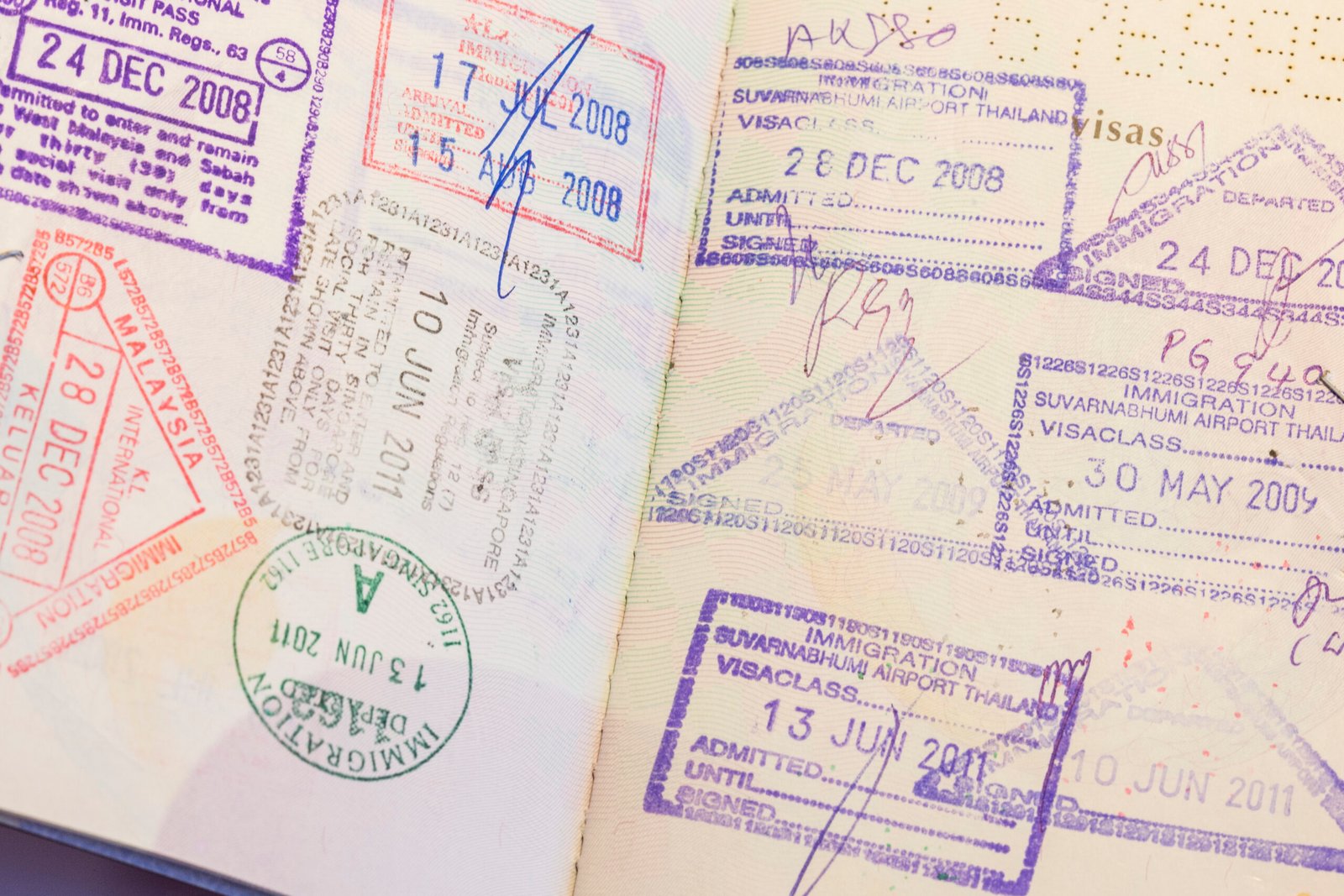Categories
The truth no one tells you about becoming and staying a pilot!
Here’s the truth no one tells you about becoming and staying a pilot: the dream survives on boring discipline—steady budgets, conservative debt, cash reserves, and the humility to plan for detours you don’t see coming. Pilots face unique cliffs and crosswinds—medicals, industry cycles, mandatory retirement—so the real flex is designing a life that can hold its course when the wind shifts, not just when the skies are blue.pinnacleprivatewealthadvisors+1
Build your “financial flight plan” early and fly it like procedures: know your training debt, repayment terms, living costs, and a minimum three-to-six-month reserve; then, as income climbs, resist lifestyle creep and route the surplus to savings, investments, and early payoff so compounding does the heavy lifting while you keep your head clear. Training is an investment, but it’s still debt—own your rates, options to refinance, and the exact monthly you can cover as a CFI without cutting into stability; your credit and sleep will thank you for the on-time cadence.stratus+1
You’ll see pay spikes and hiring booms, then lulls; treat that volatility as a design constraint, not a surprise, and tune your plan for turbulence—tax planning on high contribution years, cash buffers for lean cycles, and a parallel path if a medical grounds you earlier than planned. The goal isn’t speed, it’s endurance: a slow-burn timeline to ratings, a scalable hour-building strategy, and a habit of redirecting raises into long-term buckets so compounding becomes your quiet co-pilot, not a someday wish.stratus+1
If that all feels unglamorous, good—stability rarely looks heroic in the moment. It looks like a pilot who keeps promises to their future self, even on small paychecks, because the real ROI isn’t just salary—it’s a life where flying stays a joy, not a financial emergency. That’s how you build longevity and wealth you can hand down: deliberate pacing, resilient cash, diversified investing, and the courage to celebrate with restraint today so you can keep showing up, healthy and unhurried, for decades.holbornassets+2
- https://stratus.finance/planning-for-your-financial-future-as-a-pilot/
- https://www.mynavyhr.navy.mil/Portals/55/Reference/NOOCS/Vol1/Entire%20Manual_I_90_Intro_Jan25.pdf?ver=Qc8dzEXt3eA7uvOsLCzUlQ%3D%3D
- https://www.pinnacleprivatewealthadvisors.com/blog/ready-for-takeoff-a-pilots-guide-to-financial-planning-for-the-future
- https://static.e-publishing.af.mil/production/1/af_a1/publication/dafman36-2032/dafman36-2032.pdf
- https://holbornassets.com/financial-advice-for-airline-pilots/
- https://www.stvincent.edu/assets/docs/default-library/2025-2026-Catalog-Undergraduate-and-Graduate.pdf
- https://nbaa.org/news/business-aviation-insider/2024-03/a-stabilized-approach-to-sustainable-pilot-salaries/
- https://www.congress.gov/bill/114th-congress/senate-bill/2943/all-info
- https://www.bonfirefinancial.com/pilots/
- https://www.loudoun.gov/m/faq
Sky’s the Limit: Exploring the Environmental Impact of Aviation
Aviation has long captured the human imagination, connecting people and places in ways that were once thought impossible. Yet, as we soar through the skies, a pressing question looms: what is the environmental impact of our airborne adventures? While many are drawn to careers in this dynamic field—from pilots to drone operators—it’s essential to also consider how these professions intersect with sustainability.
For those looking to break into aviation, pilot training programs offer an exciting pathway. Comprehensive flight training equips aspiring aviators with crucial skills and knowledge, preparing them for careers that can range from commercial piloting to specialized roles in cargo transport or agricultural aviation. However, as future pilots gear up for their takeoff into professional skies, they must also grapple with understanding their carbon footprint. Many training programs now emphasize eco-friendly practices alongside technical skills. Moreover, advancements in technology are paving the way for greener aircraft designs that reduce emissions significantly.

On another front, remote-controlled (RC) drones have emerged as game-changers in various sectors—from agriculture and film production to search and rescue operations. The rise of drone technology has opened doors for innovative careers without requiring a traditional pilot’s license. Training programs tailored specifically for drone operation teach individuals not only how to navigate these high-tech devices but also instill a sense of responsibility regarding environmental stewardship. With regulations tightening around airspace and ecosystem management, knowledge about sustainable practices has never been more critical for new entrants into this rapidly evolving domain.
As opportunities abound within aviation careers, reviewing different flight training programs is vital to ensure quality education and safety standards are met. Potential students should examine factors such as instructor experience, fleet maintenance protocols, and environmental initiatives incorporated into their curriculum. Some institutions even offer courses focused on sustainable aviation technologies—allowing trainees to become well-versed in both flying techniques and environmentally conscious innovations like biofuels or electric aircraft systems.

Moreover, navigating the complexities of aviation insurance is essential for anyone stepping into this arena—whether you’re a seasoned pilot or an aspiring drone operator. Aviation brokers play a pivotal role by helping individuals secure appropriate coverage tailored to their specific needs while considering financial implications tied to environmental policies. Rates can vary widely based on numerous factors including aircraft type, operational scope, and even geographic location; thus understanding what influences these rates enables professionals to make informed choices.
In recent years, there’s been a notable shift toward sustainability within insurance offerings too. Some companies incentivize clients who adopt eco-friendly practices or invest in green technologies by offering reduced premiums—a trend that reflects growing awareness about climate change within the industry.
As we look skyward at all that aviation encompasses—from thrilling flights across continents to groundbreaking drone applications—the importance of aligning career aspirations with environmental consciousness cannot be overstated. By embracing sustainable practices and considering innovative solutions throughout every facet of aviation—from training programs through insurance options—we can help ensure that the sky truly is the limit—not just for our dreams but also for our planet’s health.
In conclusion, while pursuing careers in aviation opens doors filled with excitement and potential growth opportunities, it’s imperative that we remain vigilant about our ecological responsibilities along the way. After all, soaring through azure skies should not come at nature’s expense!
The Sky’s the Limit: Exploring the World of Private Aviation
The realm of private aviation offers a thrilling blend of luxury and innovation, providing individuals with unparalleled freedom to traverse the skies. Whether you’re an aspiring pilot or simply captivated by the mechanics of flight, there’s a wealth of opportunities within this vibrant industry. In this post, we’ll delve into essential topics such as pilot and RC drone training for careers, reviews of flight training programs, and insights on aviation brokers and insurance companies.
*Pilot & RC Drone Training for Careers**
For those dreaming of soaring through the clouds, becoming a pilot isn’t just a fantasy—it’s an achievable career path. Traditional flight schools offer comprehensive training programs that equip students with essential skills. These programs typically cover everything from navigation techniques to emergency procedures, ensuring future pilots are well-prepared for real-world challenges.
In recent years, remote-controlled (RC) drones have surged in popularity, opening new avenues in aviation careers. Drone piloting has transformed industries like agriculture, filmmaking, and surveying by offering innovative solutions that were once unimaginable. Specialized training courses are now available to certify drone operators; these can vary from online classes to hands-on workshops. As demand increases for skilled drone pilots across various sectors, investing time in this area can lead to exciting job prospects.
*Flight Training Program Reviews**
Choosing the right flight training program can be daunting given the multitude of options available today. It’s crucial to consider factors such as location, cost, instructor experience, and student outcomes when making your decision.
A few notable programs have garnered attention for their robust offerings:
1. **ATP Flight School:** Known for its fast-paced curriculum tailored toward aspiring airline transport pilots (ATPs), ATP provides an accelerated path to obtaining necessary certifications while boasting modern aircraft fleets.
2. **Embry-Riddle Aeronautical University:** Renowned globally as one of the premier aviation universities, Embry-Riddle combines rigorous academic standards with practical flight experience. Students gain access to cutting-edge technology and resources that set them apart in the competitive field.
3. **Private Pilot License (PPL) Programs:** Many local flying clubs offer PPL programs emphasizing personal instruction and community-based learning experiences. Diligently researching local options may uncover hidden gems that foster both skill development and camaraderie among fellow aviators.
Participant testimonials often highlight not only technical skills but also soft skills gained during their training—teamwork being a recurring theme!
*Aviation Brokers and Insurance Companies and Rates**
Navigating the purchase or lease of an aircraft can be intricate; that’s where aviation brokers come into play. Acting as intermediaries between buyers and sellers or renters helps ensure smooth transactions happen seamlessly while maximizing value on both sides.

Brokers possess extensive market knowledge—understanding trends can help clients make informed decisions about their investments in private jets or helicopters tailored to their unique needs.
Insurance is another critical aspect often overlooked by new aviators entering this sphere. Rates can vary widely based on numerous factors including aircraft type, intended use—whether personal pleasure flying or commercial operations—and pilot experience levels. Engaging with reputable insurance companies specializing in aviation coverage ensures you receive appropriate protection against unforeseen circumstances while enjoying your airborne adventures.
In conclusion, private aviation is more accessible than ever before! With diverse career paths emerging from pilot training programs—both manned flights and drone operations—and expert brokerage services guiding financial investments alongside robust insurance options safeguarding interests; it’s clear that opportunities abound in this exhilarating sky-high world! So strap in—your journey awaits!
Soaring Above: The Future of Sustainable Aviation and Green Technologies
As humanity continues to grapple with climate change, the aviation industry is not standing still. With a growing focus on sustainability, advancements in green technologies are setting the stage for a new era in flight. From pilot training initiatives to innovative aircraft design, the future of aviation is bright—and green.
First and foremost, let’s talk about the pilots of tomorrow. As we shift towards more sustainable aviation practices, training programs are evolving accordingly. Pilot and RC drone training are becoming increasingly popular career paths for those interested in entering this dynamic field. Flight schools now integrate eco-friendly practices into their curriculums, focusing on energy-efficient flying techniques and emphasizing the importance of reducing carbon footprints.
Moreover, with the rise of unmanned aerial vehicles (UAVs), aspiring aviators have a plethora of opportunities at their fingertips. Training programs for remote-controlled drones encompass everything from basic piloting skills to advanced navigation techniques. Many reputable flight schools offer comprehensive courses that cover regulations, safety protocols, and even environmental impacts—ensuring that future drone operators are equipped with both technical expertise and ecological awareness.
The demand for skilled pilots is accompanied by an increasing need for qualified evaluators who can assess various flight training programs. Potential students often find themselves overwhelmed with options; therefore, thoughtful reviews play a crucial role in helping them make informed decisions. Institutions now host forums where experienced pilots share insights about different training facilities, equipment quality, available mentors, and overall experiences.
These reviews help paint an accurate picture of what prospective students can expect from their chosen program while shedding light on how environmentally conscious these institutions are becoming in light of recent developments in sustainable aviation technologies.
As we soar higher into the skies of tomorrow’s aviation landscape, it’s also essential to consider the role of aviation brokers and insurance companies in promoting sustainability. These entities play a significant role in facilitating eco-friendly practices by offering tailored policies that reward greener operations. For example, many brokers now provide incentives for operators who invest in fuel-efficient aircraft or implement strategies that minimize emissions.
Insurance rates can vary widely based on an operator’s commitment to sustainability; companies often view eco-friendly measures as indicators of reduced risk. By aligning financial benefits with environmental responsibility, insurance providers encourage airlines and private operators alike to adopt greener technologies—ultimately contributing to lower global emissions across the board.

Furthermore, as technology advances rapidly—think electric propulsion systems or biofuels—the risk landscape shifts too. Insurance companies must adapt their offerings accordingly while ensuring they remain competitive within the market—and this adaptability could serve as a catalyst for further innovation within sustainable aviation.
In conclusion, as we venture into an era marked by heightened ecological concerns and technological breakthroughs, it’s clear that sustainable aviation isn’t just an idealistic notion—it’s becoming our reality. From nurturing skilled pilots through cutting-edge training programs to fostering relationships between brokers and insurers that promote green strategies—the trajectory ahead looks promising indeed! Together we can embrace this journey toward a cleaner sky while redefining what it means to take flight responsibly.
Soaring High: The Evolution of Aviation Technology
Aviation has always been a field marked by innovation and rapid evolution, transforming the way we connect with one another across vast distances. From the first powered flights to today’s sophisticated drones, the technology behind aviation continues to evolve at a breathtaking pace. As this dynamic landscape grows, so too do the opportunities for aspiring pilots and aviation professionals.
One of the most exciting developments in recent years is the rise of pilot training programs that cater to both traditional pilots and remote-controlled (RC) drone operators. For those considering a career in aviation, obtaining proper certifications is crucial—whether you’re aiming to fly commercial aircraft or operate advanced drones for various applications such as photography, agriculture, or emergency response. Many flight schools now offer specialized training programs that incorporate both ground school education and practical flying experience tailored to individual needs.
For budding aviators interested in RC drone operation, there are numerous training courses designed to equip them with necessary skills. These programs often cover topics like airspace regulations, safety protocols, and hands-on flying techniques. Furthermore, as industries increasingly rely on drones for aerial surveillance and data collection, gaining expertise in this area can open new doors and lead to rewarding career paths.
Flight training program reviews reveal diverse experiences among students and highlight which institutions stand out in providing comprehensive education. Prospective pilots should seek out schools with proven track records of success stories—where graduates have gone on to secure jobs with major airlines or have established their own flight operations. Detailed reviews often focus on aspects such as instructor qualifications, aircraft availability, student-to-instructor ratios, and overall curriculum effectiveness.
Additionally, many aspiring pilots find value in online forums where they can share insights about specific programs or seek advice from seasoned aviators about what type of training best suits their career aspirations. In an industry where networking plays a significant role in landing jobs post-training, leveraging these platforms can be beneficial.
As technology advances within aviation itself—think autopilot systems or augmented reality cockpit displays—the need for experienced flight instructors becomes even more pronounced. Schools must stay ahead of these trends by integrating modern tools into their curriculums while maintaining foundational flying skills essential for all pilots.
Another vital component underpinning the aviation ecosystem is the role played by brokers and insurance companies that provide coverage tailored specifically for aviation purposes. Whether you’re a private pilot owning your aircraft or running an aerial photography business with multiple drones at your disposal, understanding aviation insurance is paramount.
Insurance rates vary based on factors such as aircraft type, pilot experience level, location of operation, and intended use—commercial versus recreational activities can result in significantly different premiums. Aviation brokers specialize in navigating this complex world; they help clients find policies that suit their unique needs while ensuring they maintain compliance with federal regulations.

In conclusion, as we soar into an era defined by technological advancements within aviation—from enhanced flight training options to innovative drone capabilities—the opportunities abound for those willing to invest time and effort into becoming skilled professionals. With robust educational pathways available alongside specialized insurance solutions designed specifically for aviators’ needs, there’s never been a better time to embark on your journey through the skies!



